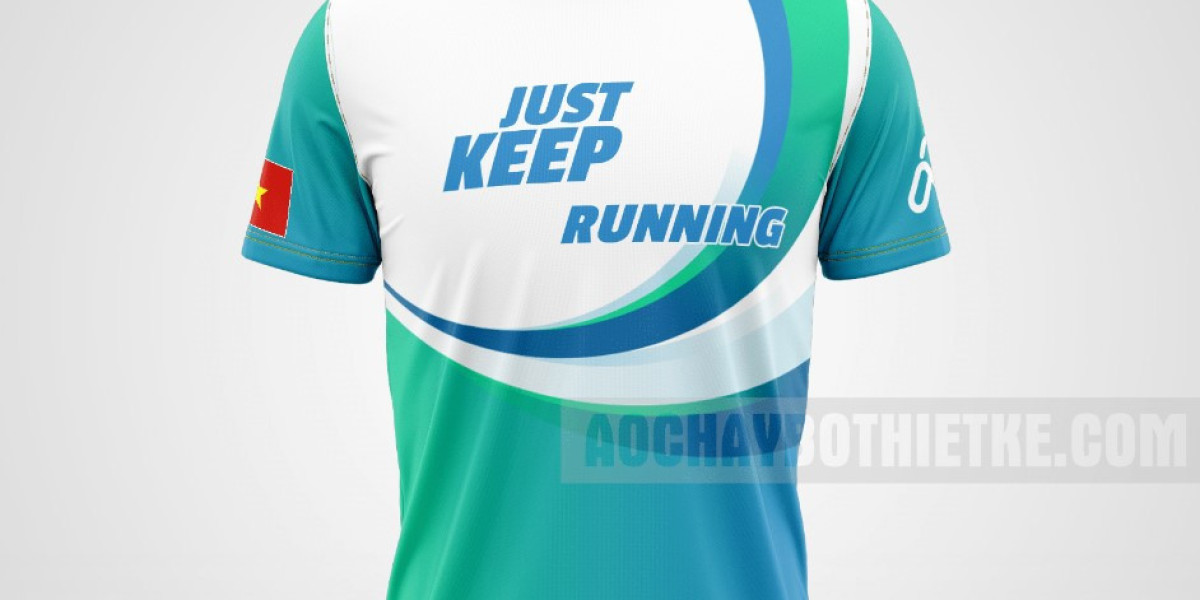Running is one of the most accessible forms of exercise. All it takes is a good pair of shoes and the right clothing. Among the essential pieces of gear for any runner, the running shirt stands out as a critical component. But what makes the perfect running shirt? Designing one involves more than simply stitching fabric together. It requires a deep understanding of material science, ergonomics, human comfort, and the needs of athletes. From the initial concept to the finished product, each stage is meticulously crafted to deliver comfort, performance, and durability.
In this article, we'll dive into the process of designing the perfect running shirt design, focusing on key elements such as material choice, fit, functionality, and aesthetics. We will also explore how sustainability and innovation are shaping the future of running apparel.
The Importance of Material Selection
When designing a running shirt, the first decision revolves around the type of fabric. This is arguably the most important choice, as it directly impacts the shirt's comfort, breathability, and moisture-wicking properties.
Moisture-Wicking Technology
Running generates sweat. A lot of it. Therefore, one of the primary functions of a running shirt is to keep the runner dry and comfortable. Moisture-wicking fabrics, like polyester and nylon blends, are engineered to pull sweat away from the skin and transfer it to the surface of the fabric, where it evaporates. This not only helps in keeping the runner dry but also prevents chafing and skin irritation, which are common issues with cotton shirts.
Advanced moisture-wicking fabrics go beyond basic sweat absorption. Some materials incorporate antimicrobial treatments to reduce odor, ensuring that the runner feels fresh even during extended workouts. Other shirts might feature hydrophobic fibers that repel water, ensuring that the shirt remains lightweight even when wet.
Breathability and Ventilation
Along with moisture-wicking, breathability is a key factor in the design of running shirts. Breathable fabrics allow air to circulate freely through the garment, keeping the body cool by evaporating sweat and providing ventilation. Designers often incorporate mesh panels in high-sweat areas like the back, underarms, and sides to increase airflow and reduce overheating.
Natural fibers like merino wool are also gaining popularity for running shirts due to their breathability, moisture management, and natural odor resistance. While wool might seem counterintuitive for running in hot weather, it can be highly effective when designed appropriately for performance wear.
Fit: Ergonomics and Comfort
A running shirt’s fit is critical for both comfort and performance. If it's too tight, it can restrict movement; if it's too loose, it can cause chafing or discomfort. The perfect running shirt should feel like a second skin—neither constrictive nor baggy.
Freedom of Movement
Running involves repetitive motion, and the body’s natural biomechanics must be considered when designing a shirt. Ergonomically cut garments feature seams and stitching that follow the contours of the body, allowing for a full range of motion without friction or irritation. Many modern running shirts are designed with raglan sleeves, which extend in one piece from the collar to the underarm, offering better mobility for the arms and shoulders.
Seamless Construction
One design element that can make or break a running shirt is the placement of seams. Traditional seams can rub against the skin, causing irritation or even painful chafing during long runs. To combat this, many high-performance running shirts use flatlock or seamless construction techniques. These methods ensure that the seams are smooth and sit flat against the body, eliminating the risk of discomfort.
Functional Features: Practicality Meets Performance
A running shirt needs to be more than just comfortable—it should offer features that enhance the runner's experience. Designers take into account the environment, climate, and individual preferences to incorporate functional elements.
Reflective Details
For safety, especially during early morning or late evening runs, reflective details are essential. These can be incorporated into logos, stripes, or patterns on the shirt, ensuring that the runner is visible to others in low-light conditions. Modern designs often use heat-transfer reflective materials that are lightweight and durable, without affecting the shirt's overall feel.
Storage Solutions
Many running shirts now come equipped with small pockets, often located in discreet places like the sides or back. These pockets are designed to store essentials like keys, energy gels, or a phone without bouncing or becoming cumbersome. Zippers are often added to secure items, giving runners peace of mind during their workout.
Sun Protection
Runners who spend a lot of time outdoors need clothing that protects them from harmful UV rays. Many modern fabrics are designed with built-in UPF (Ultraviolet Protection Factor) to shield the skin from the sun’s rays. Incorporating sun protection into the fabric reduces the need for sunscreen in covered areas, providing additional convenience for athletes.
Aesthetics: Style Meets Performance
While function is paramount, aesthetics also play an essential role in the design of running shirts. Many runners want gear that not only performs well but looks good too. From bold patterns to sleek, minimalist designs, running shirts now come in a variety of styles that cater to individual tastes.
Color is also an important consideration. Lighter colors reflect sunlight and can keep runners cooler in hot weather, while darker colors are often chosen for their slimming effect or their ability to hide sweat. Bright, bold colors and patterns are popular for their visibility and the energy they convey, while others might prefer neutral tones for a more understated look.
Designers often collaborate with athletes to create clothing that resonates with their personal style, resulting in collections that not only function well but appeal to a wide range of runners.
Sustainability: The Future of Running Apparel
With the growing demand for sustainable fashion, many running apparel brands are turning to eco-friendly materials and processes. Recycled polyester, made from plastic bottles, is becoming a popular choice for running shirts. Not only does this reduce waste, but it also cuts down on the carbon footprint associated with producing new polyester.
Additionally, biodegradable fabrics, like Tencel or organic cotton, are being used to create shirts that are both high-performance and environmentally friendly. Some companies are even exploring bio-engineered fabrics that mimic the properties of synthetic fibers without the environmental impact.
Sustainability also extends to the production process. Brands are focusing on reducing water usage, eliminating harmful chemicals, and improving labor practices in their supply chains. The goal is to create performance apparel that benefits both the runner and the planet.
Innovation: The Cutting Edge of Running Shirt Design
Innovation is at the heart of creating the perfect running shirt. With advancements in fabric technology and design techniques, running shirts are becoming smarter and more functional. For instance, smart fabrics embedded with sensors can monitor heart rate, body temperature, and other physiological metrics, providing real-time data to runners.
Other innovations include thermoregulating fabrics that adjust to the body’s temperature, keeping runners cool in hot conditions and warm in colder weather. Compression technology is also being integrated into running shirts to enhance blood flow and reduce muscle fatigue, helping runners recover faster.
Conclusion: The Pursuit of Perfection
Designing the perfect running shirt is an ongoing pursuit that balances comfort, performance, and style. From material selection to innovative features, every detail matters. As technology and sustainability continue to evolve, the running shirts of the future will not only meet the demands of athletes but also align with environmental and ethical standards. The perfect running shirt is no longer just a piece of clothing—it’s a high-performance tool that helps runners reach their full potential, mile after mile.


